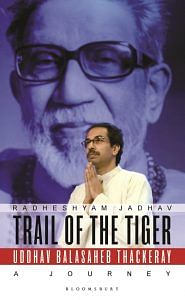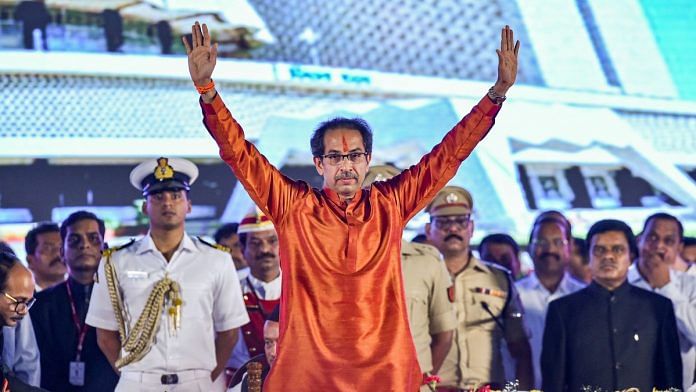The most significant statement by Uddhav Thackeray was made in the state assembly on 18 December 2019. Explaining the past, present and future of his party Uddhav said, ‘At last, this is politics. In politics, we were probably committing a mistake by mixing religion and politics.’ He said that politics was a gamble and must be played like one. Uddhav admitted, ‘Somewhere we were mixing religion and politics. Today we are bearing the brunt…’ he insisted that the break with the BJP did not mean that he had ‘converted to another religion’.
This challenge to the BJP is significant. Uddhav’s narrative questioned BJP’s monopoly over the Hindutva agenda. There could be a Hindutva-centric political narrative outside the BJP’s realm, he maintained. Those who fight the BJP or vote for other parties are not anti-Hindus and the party had no right to judge Hindus or Hindutva.
Using religion to stoke fire and win power is not my Hindutva, Uddhav said in an interview to Saamana, adding that people killing each other is not Hindutva either. ‘Spreading misinformation or misusing [Hindutva] to gain power is not my Hindutva,’ he asserted and pointed out that Hindutva is his faith and it does not create problems for running the government. All governments in India, including Modi’s at the Centre, are being run within the framework of the Indian Constitution and not Hindutva, he said. After he became the CM, Uddhav reminded people that the Ram Mandir issue was resolved as per the Indian Constitution and within the framework of the judiciary. he added that he would not accept a Hindu Rashtra where religion is used to attack people and gain power using any means—and all this in the name of religion.
Many leaders of the new alliance believe that the Maharashtra experiment can lead the way for the formation of similar anti-BJP fronts in other states. Uddhav appears to be tapping the potential for an alternate Hindutva narrative, like the Sena’s, against the BJP’s version in states other than Maharashtra. In his first visit to Ayodhya in March 2020 as the chief minister, Uddhav declared that he owed his position to the blessings of Ram. Offering prayers at the makeshift Ram Lalla temple at the Ramjanmabhoomi site, he said that the BJP is not the custodian of Hindutva.
Also read: Bal Thackeray’s father and Ambedkar used Navratri festivities to counter Brahmin Ganesh utsav
Uddhav’s experiment with an alternative Hindutva may seem new but he is actually taking the path of his grandfather, Keshav Sitaram Thackeray. In 1921, Keshav Thackeray, a passionate social reformer and writer, started a fortnightly magazine Prabodhan (enlightenment), which earned him the title Prabodhankar. He was an ardent believer in Hinduism and in 1918, he joined activist Gajanan Vaidya in establishing the Hindu Missionary Society to reconvert Hindus who had converted into Christianity and Islam. This reconversion campaign came at a time when most Hindus were against the idea. The biggest issue was—how would the reconverted deal with the caste system? A Hindu has to have a caste and what caste would the reconverted be assigned?
The Hindu Missionary Society reinvented the ritual of ‘upanayan’ (the coming of age ceremony for brahmin boys) to reconvert converted Muslims and Christians. It was a simple process—it involved a dip in a water body, chanting of the Gayatri Mantra along with the other mantras and the wearing of a sacred thread. To resolve the caste quandary, people like Chintamani Hari Marathe, a Chitpavan Brahmin, arranged for the reconverted to marry into their own families.
Being a Chandraseniya Kayastha Prabhu (CKP), Keshav Thackeray suffered caste discrimination as a child. Traditionally, CKPs are professional writers and traders. This progressive and intellectually keen community’s way of life is close to that of the brahmins.
All his life Keshav Thackeray fought fiercely against the caste system which some consider an integral part of Vedic Hindutva. He wanted converts to return to their faith but he didn’t believe in a caste system as it was discriminatory. He ended up propagating a parallel cultural structure for Hindutva. for example, he promoted the celebration of festivals focused on female deities such as Navratri over the public Ganesh festival started by Bal Gangadhar Tilak. He also fought against archaic practices such as dowry and child marriage.
Also read: ‘Don’t need your certificate for my Hindutva’ — Uddhav lashes out at Maharashtra Governor
Thackeray raised his voice against the oppressive Brahmanical structures in the Hindu society and said that the Manu Smriti, the Puranas and the temples made for a three-fold noose around the necks of Hindus. He insisted that those fighting for political freedom must also end slavery in other walks of life. On 16 October 1921, in the first issue of Prabodhan, Keshav Thackeray stated that Hindus needed to unite and in 1922, he raised the issue of Marathis losing their jobs to migrants from other states.
In his last speech, made in 1973, two months before he died aged 89, Keshav Thackeray said, ‘Amchahi ek sampradai ahe. Sahtyashodhanacha, samajik badal ghadaun ananarya prabodhanacha, Balnehi aapla ek sampraday khadlay. To Shiv Sena gheun Hindutvasathi zagadtoy. To mazyapeksha shatpat parakram gajvil. Yacha mala kevdha abhiman vatato’ (I belong to a sect, [which is] that of truth-seekers and the one which intends to bring social change through enlightenment. Bal [Balasaheb] also started his sect. He is fighting for Hindutva [under the banner of] Shiv Sena. He will achieve 100 times what I did. I am so proud of this).’
Did Keshav Thackeray mean that Balasaheb’s path had diverged from his own? Balasaheb took up his father’s Marathi-Hindutva agenda but distanced himself from his reformist agenda. Uddhav now has the opportunity to take forward his grandfather’s reformist, inclusive Hindutva and pit it against the BJP’s aggressive Hindutva—as defined by the RSS, glorifying the Vedic period and its value system.
But there is one critical difference between him and Keshav Thackeray—the latter was not a politician and didn’t have to bother about votes. Following his grandfather’s agenda may create political challenges for Uddhav.
Uddhav has dropped enough hints about veering off his father’s hardcore version of Hindutva; he has also taken a few steps away from it. But he has yet to shrug off his father’s shadow.
 This excerpt from ‘Trail of the Tiger: Uddhav Balasaheb Thackeray’ by Radheshyam Jadhav has been published with permission of Bloomsbury India.
This excerpt from ‘Trail of the Tiger: Uddhav Balasaheb Thackeray’ by Radheshyam Jadhav has been published with permission of Bloomsbury India.



